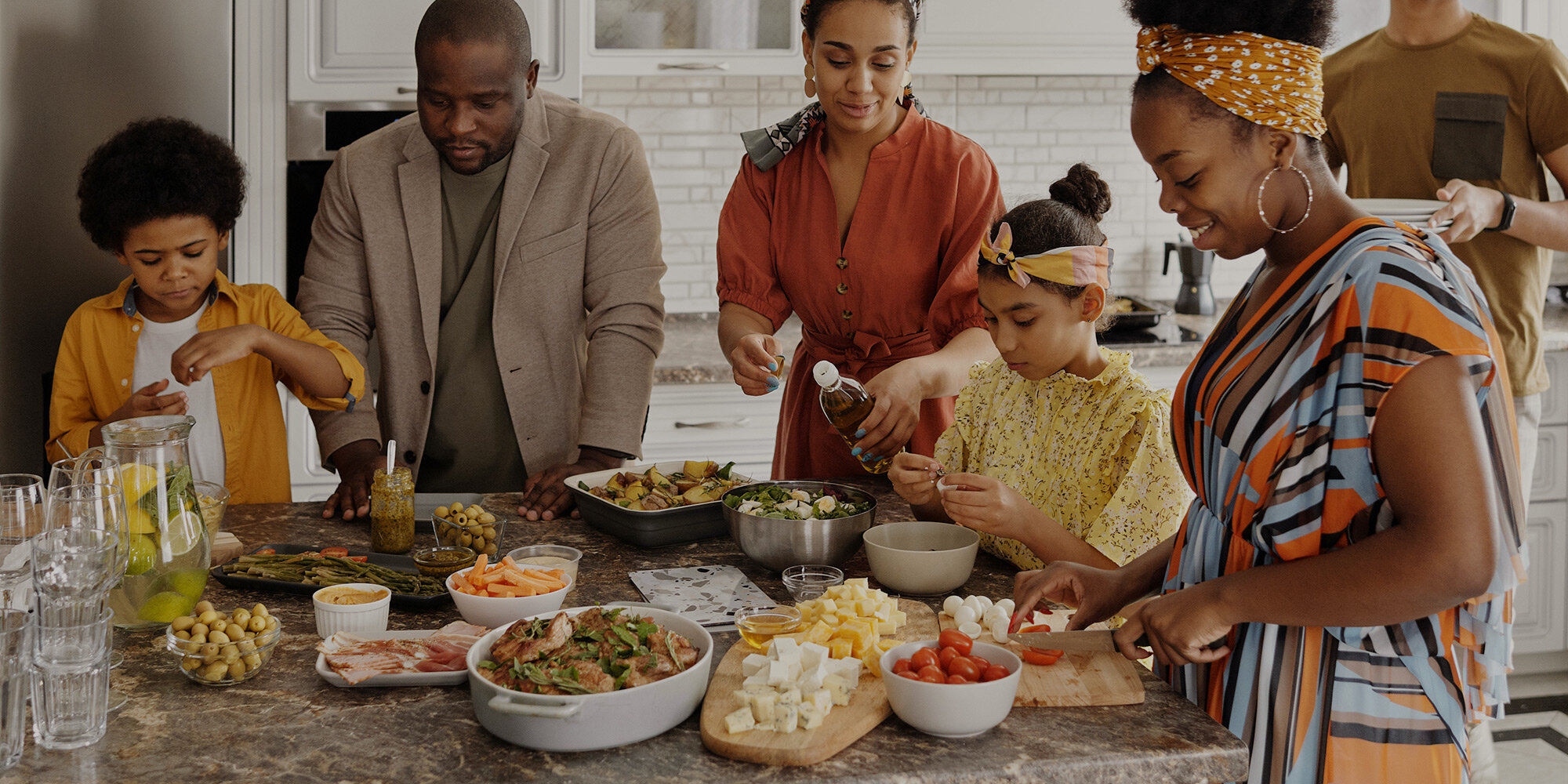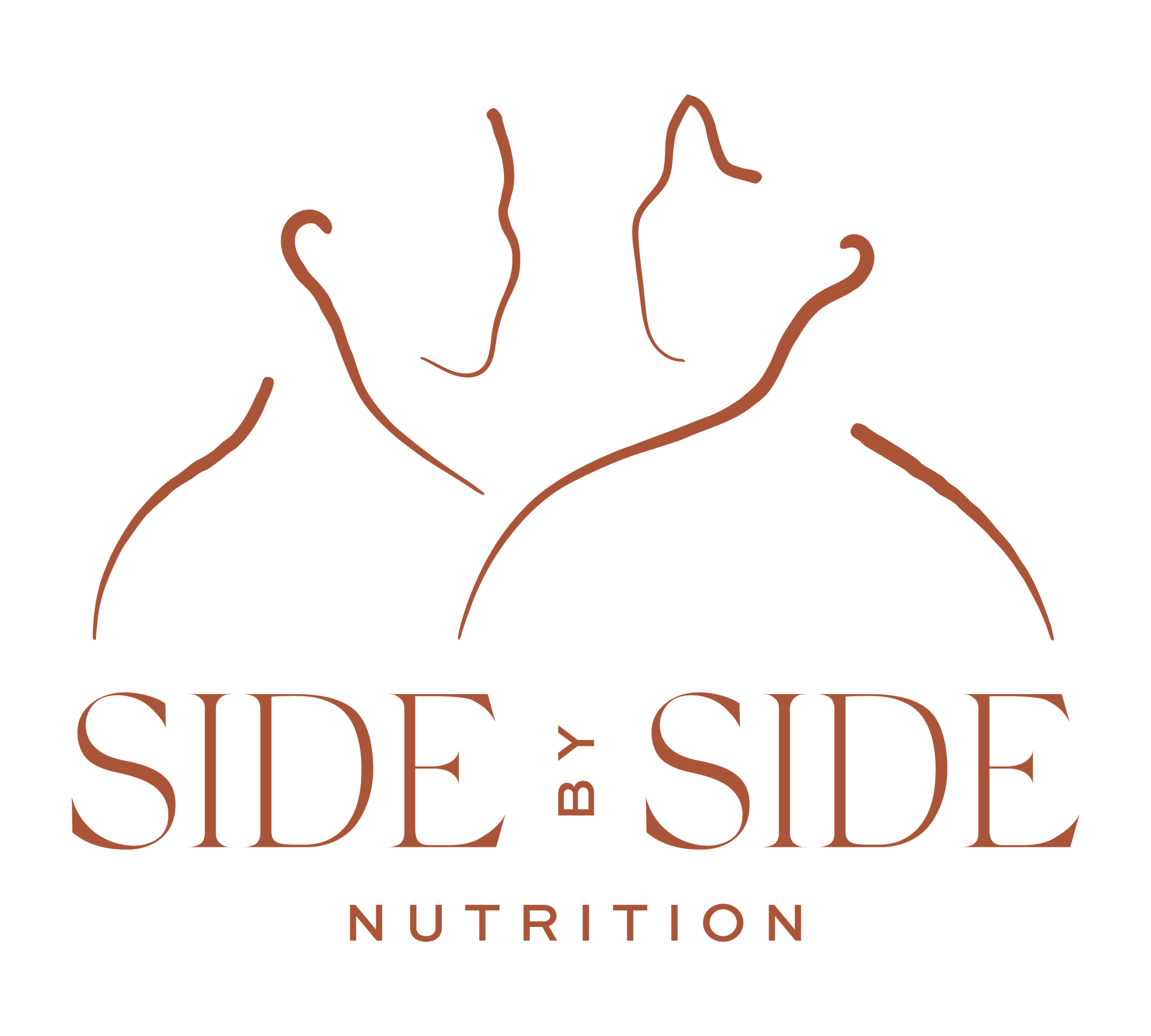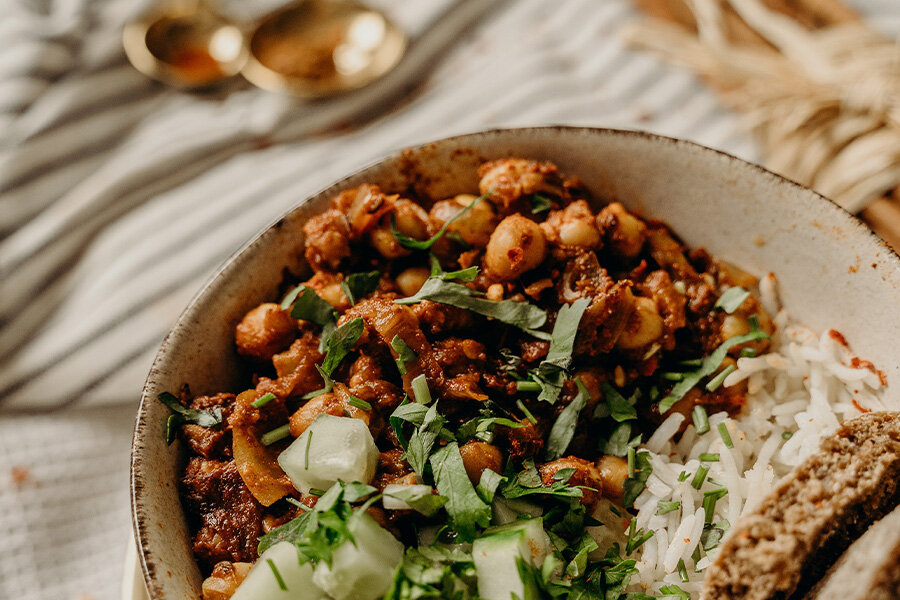
What is FBT
Family Based Treatment (FBT) is an evidence based treatment for children and adolescents with eating disorders. It uses the family and caregivers to help their child recover from their eating disorder.
Some of the principles of FBT include:
Focus on treating the eating disorder vs finding a cause. There is also no blaming of the parents or caregivers.
Empowerment focused. The goal is to empower parents or caregivers to nourish their child and help them towards recovery. As parents, you know your child best, and us as providers are here for guidance and support.
3 Phases of FBT
Phase 1
Parental management and weight restoration.
In phase 1, parents or caregivers are in charge of planning, prepping, and plating all meals and snacks to help their child get adequate nutrition. If weight restoration is needed, this is also an essential goal, as full weight restoration is an important part of recovery.
Phase 2
Gradual return of control to the adolescent.
As the eating disorder behaviors subside and weight is restored, the adolescent can help with choosing or prepping some meals or snacks.
Phase 3
Establishing healthy independence.
This may be where treatment shifts from a family focused treatment towards helping the adolescent develop an identity and independence while also being free of their eating disorder.
Length of treatment
FBT and eating disorder recovery is a marathon, not a sprint. It often takes several months or longer to restore adequate nutrition and weight. It also can take up to a year after that for eating disorder thoughts to decrease or disappear.
Sometimes, more intensive treatment options may be recommended. This does mean your child or family is failing at FBT or outpatient treatment. Often, the eating disorder is so strong, or there are medical consequences, that a higher level of care would be beneficial before returning to outpatient.
Since treatment can be intensive, it’s so important to engage in self-care as the parent or caregiver. This can mean using family or friends for support, eating disorder support groups for caregivers, or alternating who eats meals/snacks with your child.
Typically, it’s recommended to meet with your dietitian and FBT therapist weekly, but this can be individualized to your family’s situation.
Why is FBT recommended
This video is a 5 minute video that helps explain how an eating disorder can hijack your child’s brain. It explains how external parental support can be so powerful when your child is unable to make rational nutritional decisions.
Food is medicine!
Nourishment is essential for all organ systems in the brain, including the brain.
Treatment Team in FBT
A full treatment team is recommended in order to provide effective care. Your dietitian at Side by Side can help refer you to other care providers.
Your dietitian can help create and adjust an appropriate meal plan, provide education, work on exposure foods to expand variety, provide exercise recommendations, and help challenge eating disorder thoughts.
A FBT family therapist has been trained specifically in FBT. They work with the family to provide support for challenges, help teach coping skills, provide guidance, and more.
A PCP that is ideally educated on eating disorders. A PCP can help regularly monitor vital signs, weight, labs, and any other tests recommended.
Other providers, such as a psychiatrist or therapists for other family members, may be recommended.
Nourishing your Child with Family Based Treatment
Below are Additional Resources for SBS FBT clients and families.
Your dietitian will help guide you through the following resources as you work together.

Family Based Treatment: What is Nutritional Rehabilitation?
Nutrition rehabilitation is the process of nourishing your child to restore adequate nutrition, so they can grow, develop, and create a life free of their eating disorder. Many people talk about weight restoration, and while that may be a process for some adolescents, adequate nutrition is essential for all adolescents.
Growth & Nutrition
Eating disorders can impact a child’s organ system in the body, such as the heart, bones, and brain.
Peak bone mass is reached by late teens or early 20s. Nutrition can support bone development to prevent osteopenia or osteoporosis.
We often look at a child’s growth curves as one way to assess how the eating disorder has impacted their individual growth and development. All children grow differently, and a growth curve is an individual way to assess.
During puberty, it’s normal to gain on average 30-50 pounds.
During this time, it’s normal for kids to grow wider before they grow taller and for their bodies to change rapidly.
Nutrition Rehabilitation
Nutrition rehabilitation helps give your child’s body and brain the nutrition it needs to grow normally, as well as to challenge the eating disorder thoughts. While weight restoration may be part of one’s recovery, nutrition is an important part of getting to a state of recovery. This is important for kids of all body sizes and shapes and even if they do not need to weight restore.
Often, people recovering from an eating disorder may have high energy needs. Your child may need to eat more than they did before the eating disorder to support healing the body, as well as normal growth and development.
Meal Plans
A meal plan can help give your child the nutrition it needs. This can be created and individualized with your dietitian. Some general guidelines for a meal plan may include 3 meals and 2-3 snacks per day. This is a minimum, and some people may need more.
A plate model meal plan is a way to provide balanced meals with variety without calculating calories or measuring portions out. The Plate by Plate meal plan is often used and recommended to ensure there is adequate nutrition and a variety of foods served at meals and snacks. It was created by two dietitians - Casey Crosbie and Wendy Sterling. You can find a visual to it here, as well as visuals of actual plates on their Instagram page.
Please note, Side By Side Nutrition assesses the family’s individual needs and applies a modified FBT approach for each family. Although what you may read about on FBT shows a structured process, it is really important to work alongside your treatment team to implement FBT according to your needs and according to what the process continues to look like for your family as it is implemented. This is not a one-size-fits-all approach and takes careful planning, coordination, and communication of the family and treatment team. Before implementing any of these ideas on your own, speak with your SBSN dietitian to help guide and support you.
Plate Model Approach
Fill half the plate with carbohydrates, such as bread, pasta, rice, etc.
Fill a quarter of the plate with a protein, such as meat, eggs, beans.
Fill a quarter of the plate with fruits or vegetables. This could also be juice.
Add fats to the plate, such as cooking in oil or butter, adding avocado, or nuts.
Add dairy, such as milk, yogurt, or cheese. Choose full fat or 2% dairy rather than non-fat options.
For snacks, choose 2-3 food groups. If having a fruit/vegetable, choose 3 food groups instead of 2.
Working with a dietitian can help adjust the meal plan to your child’s individual needs.
Tips for Plating
Fill up the entire plate, and limit empty space on the plate.
Go through the checklist:
Are all food groups present? Grains/carbs? Protein? Fruit/veg? Dairy/calcium? Fat?
Is the plate 50% carbs? 25% protein? 25% fruit/veg? Fat in the meal (cooking oil, avocado, nuts, etc.)? Dairy in the meal or on the side?
Is the whole plate full? Use a dinner plate and fill up the whole plate. If there's empty space, you can add sides like chips, pretzels, etc.
Does the meal make sense or feel cohesive?
Have I challenged my child? While you don’t have to challenge them at every meal or snack, it is helpful to incorporate a variety of foods throughout the week. This may include takeout or restaurant food, desserts, or snack foods to help challenge the eating disorder.
There’s no “right” or “wrong” foods to provide. While there are lots of cultural messages out there about healthy or unhealthy foods, all foods provide nutrition. It’s also okay to eat food for enjoyment.
If food volume is leading to digestive discomfort, you can work with your dietitian to help find calorically dense foods. These can help reduce food volume while maintaining adequate nutrition.
For ideas, here are meal and snack idea.
Supplementation
Supplementation with nutritional supplements can be useful in a few situations, such as if it feels challenging to finish meals/snacks in the beginning, if a convenient and easy snack is needed on the go, or if energy needs and metabolism are high.
Your dietitian can help figure out how supplementation can work for your child, but the protocol below is a general guide on how to supplement.
Supplementation is often used if your child isn’t eating 100% of the meal or snack provided. It’s never used as a punishment but instead is a way to ensure they are getting enough nutrition.
How to Supplement
Choose a supplement with your dietitian. Often, Ensure Plus or Boost Plus are recommended, but there are also alternatives if they have allergies or specific dietary needs. For example, Kate Farms is a good supplement alternative that is allergy friendly and vegan.
Meals: If they finish <50% of a meal, provide 2 bottle of supplement. If they finish >50% but not 100%, provide 1 bottle of supplement.
Snacks: If they finish <50% of a snack, provide 1 bottle of supplement. If they finish >50% but not 100%, provide a half bottle of supplement.
Provide the supplement in a mug or a cup, so the bottle with the calories are not present.
Sit with your child for about 10 minutes after a meal with the supplement. If they are continuously refusing it, bring it up with your treatment team. It may be helpful to talk about possible natural consequences or next steps.
Tips for Planning
Establish the who, what, when, how of meals and snacks:
Who will prep and plate meals and snacks?
Who will eat with your child?
Who will grocery shop or plan meals/snacks?
What time are meals?
What will school time meals look like?
How long will meals and snacks be?
Avoid buying diet foods, such as low carb, low fat, sugar free options.
Provide a variety of food throughout the week. It can also be helpful to incorporate restaurant or takeout food, desserts, and other types of foods.
Tips for Meal Times
Use the 5 C’s
Stay calm. Meal times can be stressful for everyone, and going into meals as calm as possible can help your child feel safe to eat the meal and challenge the eating disorder.
Be confident. The eating disorder may question what’s in the meal, or your portion. Be confident that you know how to feed your child and remind them that this is the amount and type of food that is right for them at this meal.
Be compassionate. While the eating disorder may be combative, there is often a battle in your child’s head at meals and snacks. Be compassionate and remember that they didn’t choose their eating disorder, and you can help support their recovery.
Be clear. Be clear on your expectations, such as to come to the table at meals and snacks, to eat what is on their plate, to finish 100% or supplement, and to engage in no or minimal negotiation.
Be consistent. Consistency is important, as without it, the eating disorder may take advantage of changes. If different people are eating with your child, be sure everyone understands the meal plan and the expectations.
Use distraction or games at meal times, such as listening to music, table topics, or engaging in conversation that’s not focused on food.
Eat with your child, especially if it’s a challenging meal or snack. While your portion may be a different size, it can be helpful for your child to see you eating the same type of food.
No negotiation. The eating disorder may ask to switch to brown rice vs white rice, or ask for fruit instead of a dessert at a snack. Negotiations can allow the eating disorder to “win,” and it continues an avoidance of certain foods.
Identify and confront eating disorder behaviors in a direct, yet compassionate way. These may be hiding food, table behaviors, playing with food, cutting food into small pieces or taking tiny bites, or running to the bathroom after meals.
Reassure your child and express confidence, “I know you are scared, and I know you can do this.”
Use verbal prompts, such as “Take another bite,” “pick up your fork,” “keep going.”
Sit next to your child and let them know you are there for support and that you love them too much to let the eating disorder win.
Avoid desire to rationalize or explain. While it makes sense to provide your child with information, your child is having a fear response at a meal. Provide support instead of information.
Redirect the eating disorder thoughts.
Example:
“This ice cream has too many calories. How much did you give me?”
Response: “I know you are scared. I’m eating the ice cream with you. This is exactly what you need.”
Create incentives and natural consequences outside of meals rather than during meals.
Positive incentives may be seeing friends, getting their nails done, going to a summer camp.
Natural consequences may include needing to rest and limited activity if there is food refusal, increased supervision, supplementation (Ensure/Boost), staying at home instead of going to a friend’s house.
Tips for After Meals
Play a card or board game together.
Be in the same room together for a period of time after the meals.
If appropriate, you could go on a short walk together after meals occasionally.
Engage in coping skills, such as using mandala coloring books, listening to music, reading, journaling, or more.
Meal and Snack Ideas
BREAKFAST
Toast with spread (butter, peanut butter, avocado, jam), eggs, fruit, milk
Yogurt, granola, nuts, banana with peanut butter on the side
Waffles with spread (butter, peanut butter, syrup), yogurt or milk, fruit
Omelette with veggies, cheese, avocado, toast with butter
Bagel with cream cheese, hardboiled egg, fruit or juice
Cereal, milk, sliced almonds, sliced banana, bacon
Pancakes with syrup, butter, breakfast sausage, fruit or juice
LUNCH AND DINNER
Sandwich or wrap
Peanut butter/almond butter and jelly
Deli meat, cheese, mayo
Grilled cheese, can add tomato
Panini - turkey/ham and cheese
Hummus, veggies, cheese
Pesto and chicken
Tuna or tuna melt
Egg salad
Pasta bowl
Sauce: pesto, marinara, alfredo, butter/oil
Toppings: veggies, parmesan cheese, chicken
Burrito, burrito/rice bowl
Wrap, rice
Protein: chicken, steak, beans, tofu, cheese
Veggies: lettuce/spinach, peppers, onions, tomatoes
Toppings: salsa, sour cream, guacamole/avocado
Tacos or quesadilla
Soup and sandwich or salad
Leftovers
SIDES FOR MEALS
Beverage
Milk, chocolate milk
Lemonade
Juice
Chips
Cookie, brownie, baked good
Pretzels, goldfish, popcorn
Veggies and dip (hummus, ranch)
SNACK IDEAS
Apple and peanut butter
Nuts and dried fruit, trail mix
Hummus and pita chips
Guacamole and tortilla chips
Cookies and milk
Toast and peanut butter or nutella
Cheese and crackers
Muffin and milk
Carrots, ranch, glass of juice
Bar (clif bar, kind bar) and glass of milk
Yogurt and granola
String cheese and crackers
Cheez-its and nuts
Chocolate covered almonds and strawberries
Cereal and milk
Ice cream bar
Chips and dip
Chocolate covered pretzels and fruit
Graham crackers and peanut butter
If you need to increase snacks, you can add three items, add a beverage (like milk, juice, lemonade, hot chocolate), or increase the portion of the snack provided.
Support groups for family members
FEAST-ED - Families Empowered and Support Treatment for Eating Disorders.
On their website, they have many articles and tools, as well as a link to a Facebook group for families.
Helpful Articles
Books
How to Nourish your Child Through an Eating Disorder by Wendy Sterling and Casey Crosbie
When your Teen has an Eating Disorder by Lauren Mulheim
Anorexia and Other Eating Disorders by Eva Musby













